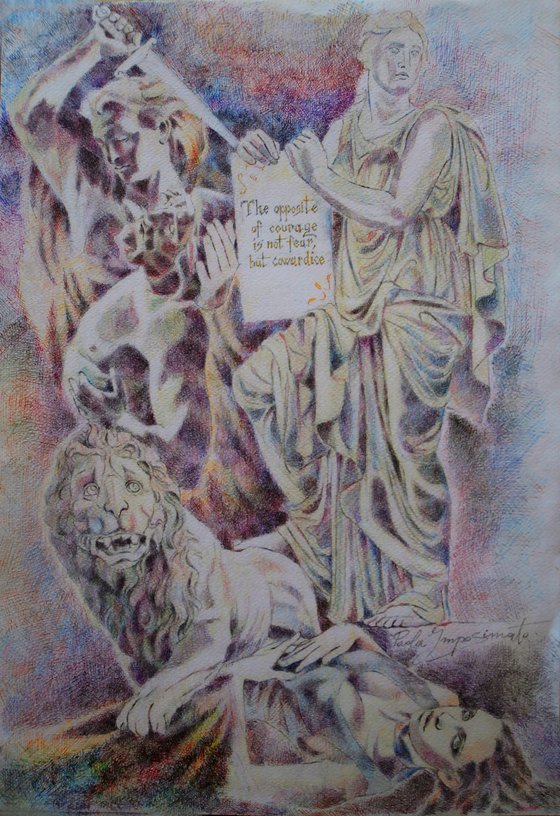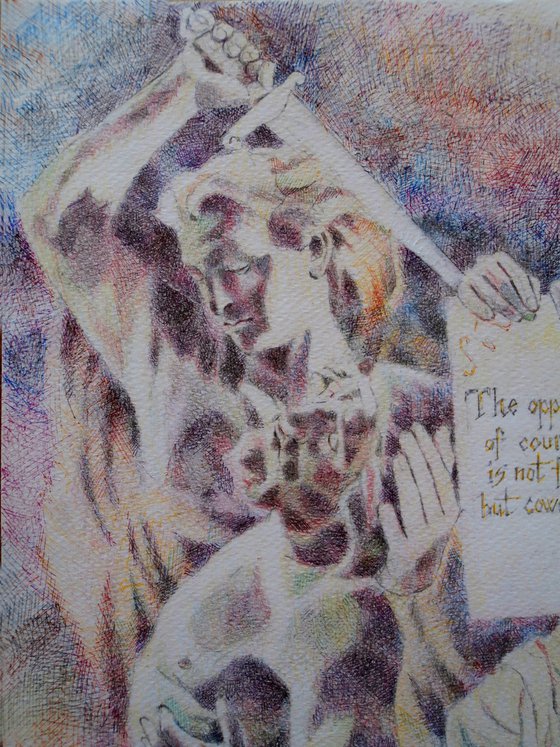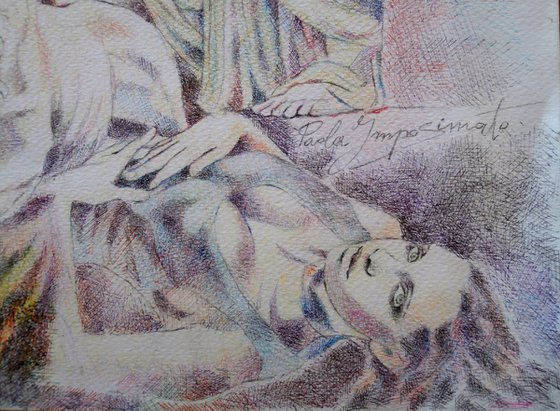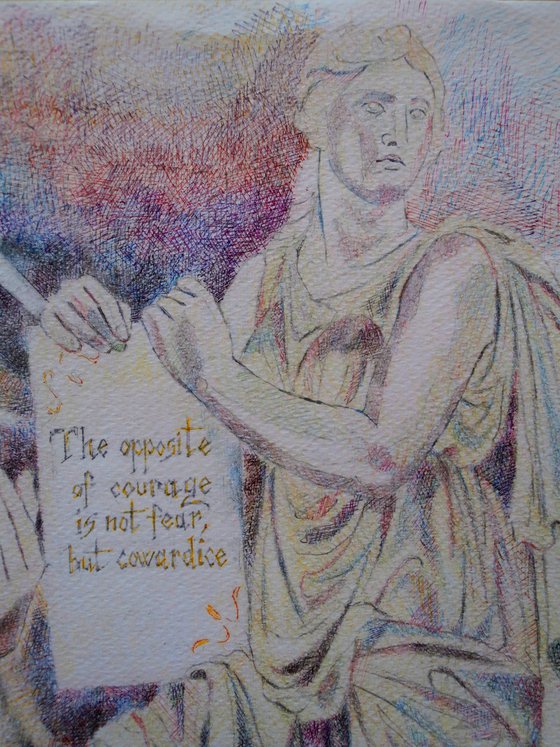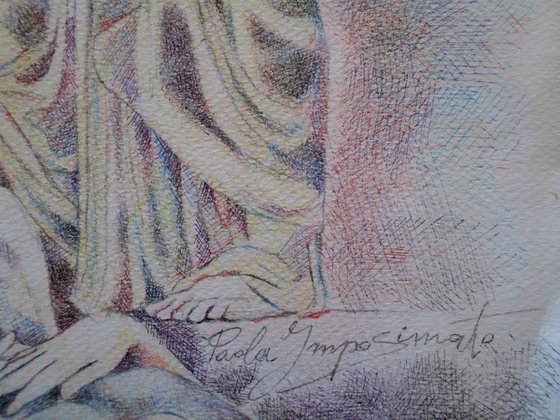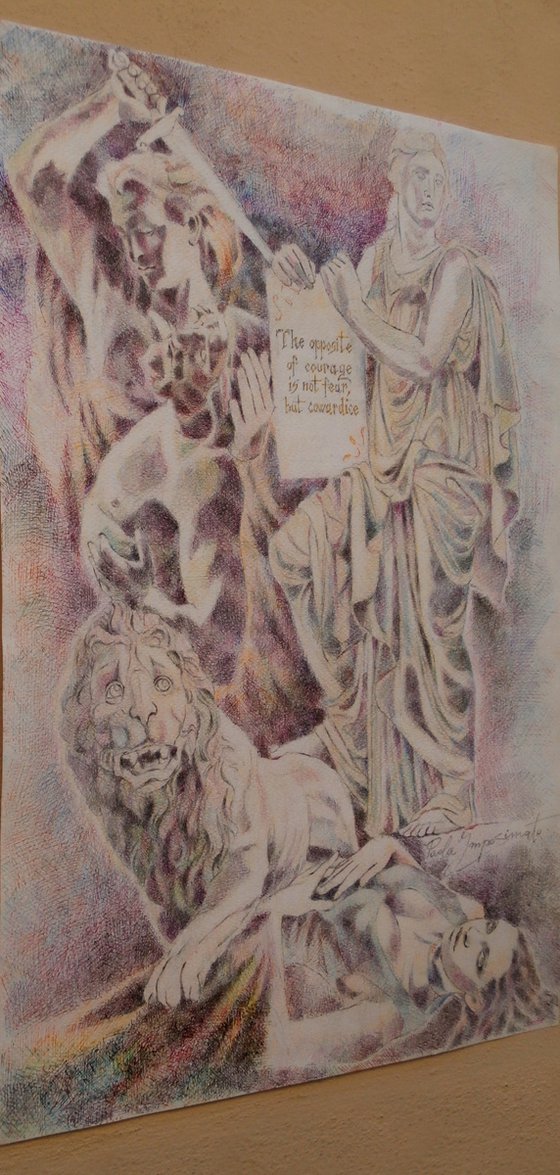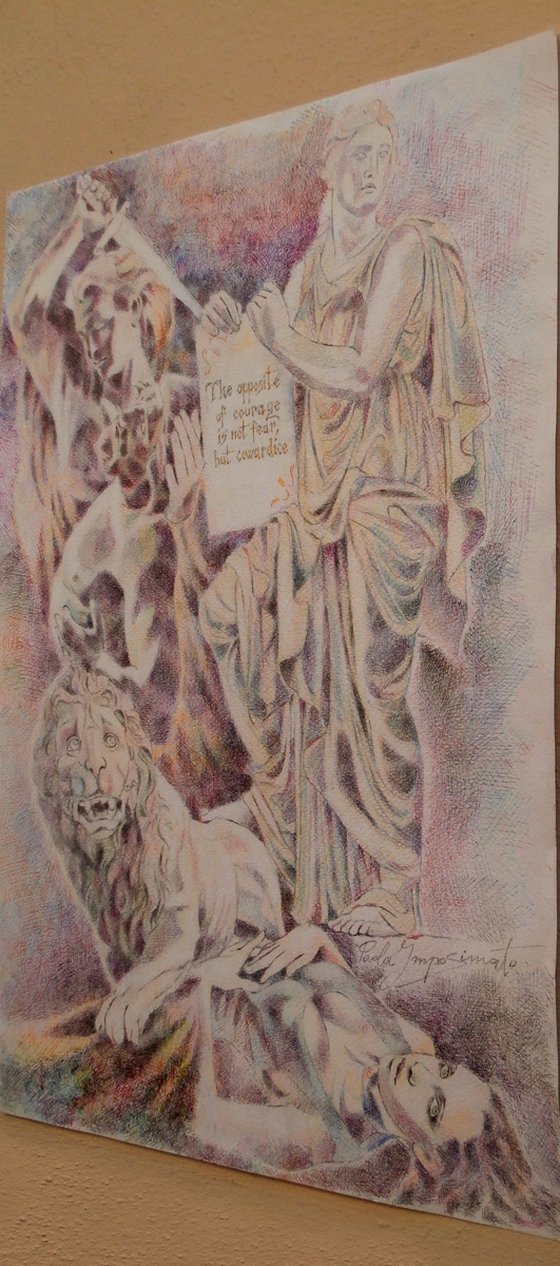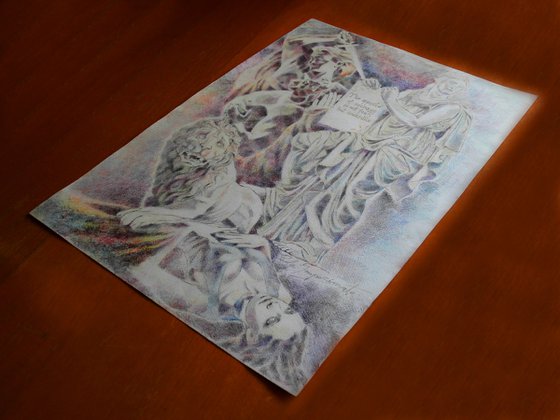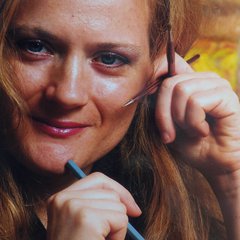- By medium
- By subject
- By budget
- Sales
- Gift cards
- Discover all art
- Artists
- Editors’ picks
- Ideas
Original artwork description:
Drawing in a contemporary figurative style with a fantasy taste, inspired by historical testimonies ascribable to the classical and medieval tradition, which tell of ancient Celtic priestly communities exclusively female, called the druidesses. In Irish myth, Celtic priestesses were wise women, prophetesses, seers, healers, poets, sorceresses, herbalists, but also warriors who actively participated in battles, haughty and brave as men. The Romans themselves (Dione Cassio) testify to this, who suffered the courageous revolt of the Britons led by the queen of the Iceni (1st century A.D.), whose imaginary portrait dominates in the upper left. The presence of the lion is symbolic, as a mythical reference to strength and courage which, as the effigy in the hands of the priestess at the top right shows, is not the opposite of fear, but of cowardice.
Materials used:
Pencil, ink and pastel on cardboard
Tags:
#fantasy #portraiture #lion #myth and legend #sword #woman lying down #enigma of beauty #history irish #warrior women #medieval traditionTHE WARRIOR QUEEN (2021) Ink drawing
by Paola Imposimato
1 Artist Reviews
£685.15
- Ink drawing on Paper
- One of a kind artwork
- Size: 33 x 48 x 0.1cm (unframed) / 33 x 48cm (actual image size)
- Signed on the front
- Style: Expressive and gestural
- Subject: People and portraits
Loading
Original artwork description
Drawing in a contemporary figurative style with a fantasy taste, inspired by historical testimonies ascribable to the classical and medieval tradition, which tell of ancient Celtic priestly communities exclusively female, called the druidesses. In Irish myth, Celtic priestesses were wise women, prophetesses, seers, healers, poets, sorceresses, herbalists, but also warriors who actively participated in battles, haughty and brave as men. The Romans themselves (Dione Cassio) testify to this, who suffered the courageous revolt of the Britons led by the queen of the Iceni (1st century A.D.), whose imaginary portrait dominates in the upper left. The presence of the lion is symbolic, as a mythical reference to strength and courage which, as the effigy in the hands of the priestess at the top right shows, is not the opposite of fear, but of cowardice.
Materials used:
Pencil, ink and pastel on cardboard
Tags:
#fantasy #portraiture #lion #myth and legend #sword #woman lying down #enigma of beauty #history irish #warrior women #medieval tradition14 day money back guaranteeLearn more
